
 BOULOGNE
BOULOGNEThe evacuation of the Welsh and Irish Guards from Boulogne on 23 - 24 May 1940
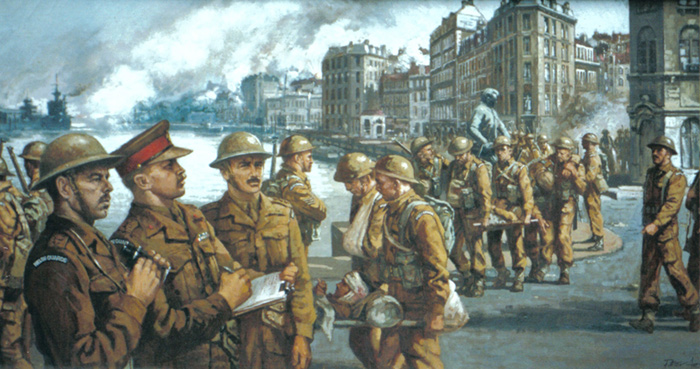 |
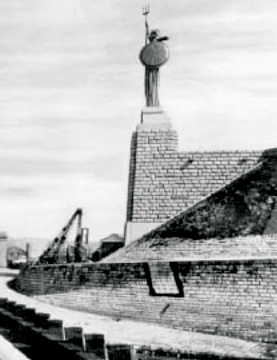 |
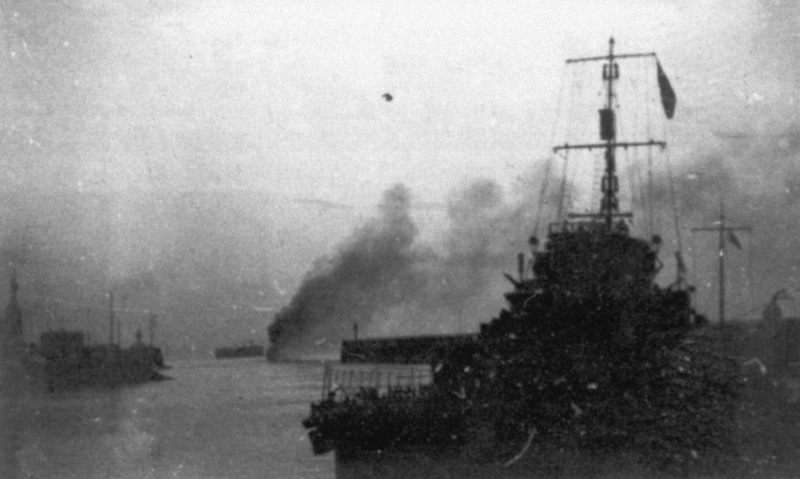 |
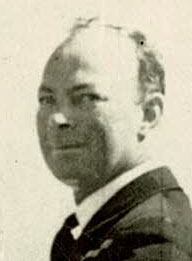 HMS Verity
(Lt Cdr A. Black RN) arrived at Boulogne
as guardship at 0019/23 and took on board General Brownrigg, the
Adjutant General for the BEF, who stated the situation was critical. He
had lost all radio communication with London and returned to Dover on Verity at 0450 to give his report.
HMS Verity
(Lt Cdr A. Black RN) arrived at Boulogne
as guardship at 0019/23 and took on board General Brownrigg, the
Adjutant General for the BEF, who stated the situation was critical. He
had lost all radio communication with London and returned to Dover on Verity at 0450 to give his report. 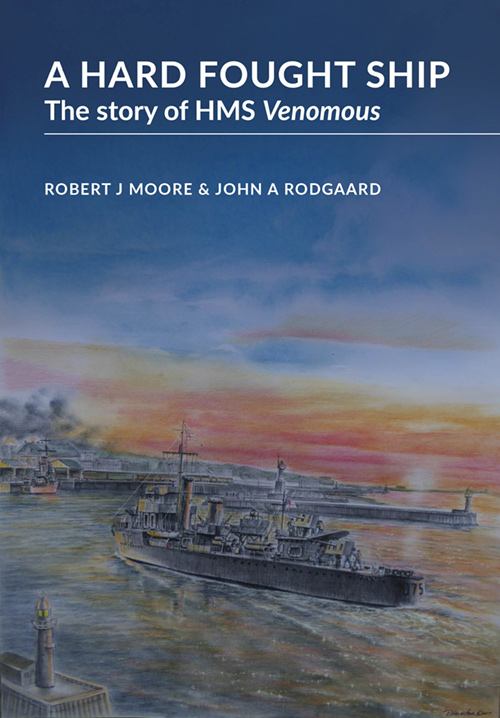 HMS Venomous entering the inner harbour at dusk on the 23 May
Passing the statue of Britannia built in 1938 and dynamited by the Germans 1 July 1940 Painted by naval architect and artist Peter K Hsu |
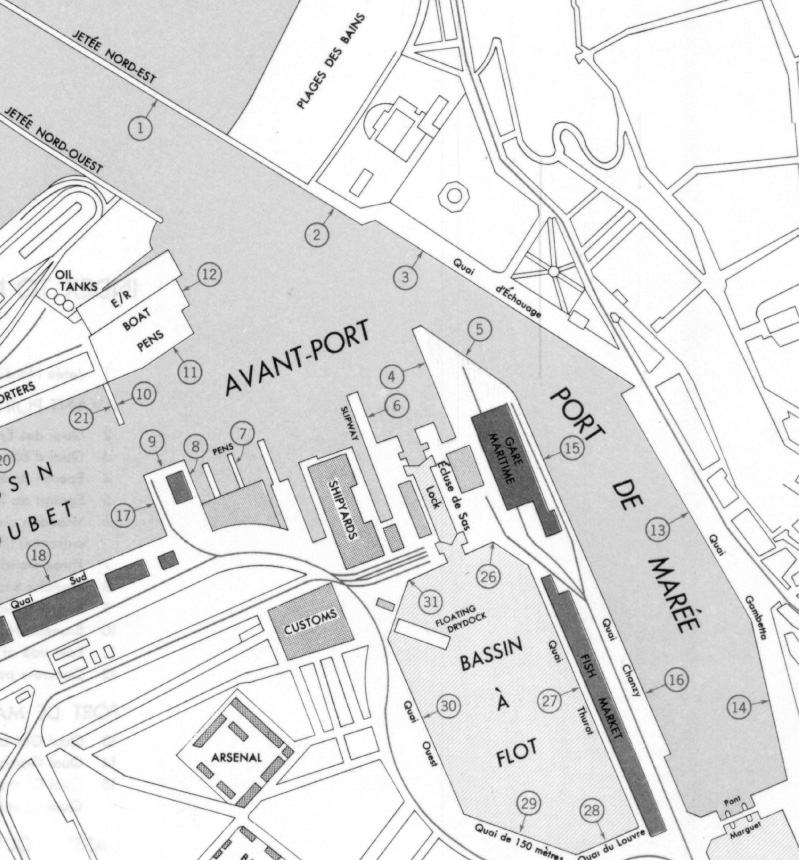 The V& Ws berthed on the Quai
Chanzy alongside the Gare Maritime to evacuate the Guards on 23 May 1940
Published by the United States Office of Strategic Services, Research and Analysis Branch, 1944 Courtesy of the Lewis Map Library, University of Princeton |
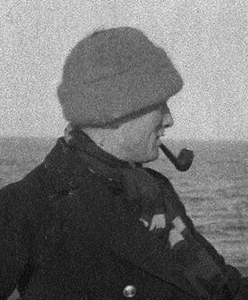 HMS Vimy
HMS Vimy 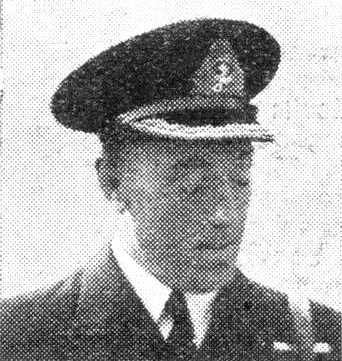 Whitshed arrived alongside at Boulogne at 1445 and embarked 70 stretcher cases. She was ordered out of the harbour with 70 wounded aboard by Captain D in HMS Keith at 1515. While leaving harbour she provided gunfire support to the Irish Guards defending the southern perimeter of the harbour. Whitshed remained off the port in contact with Keith, and was joined by Vimy, Venetia, Venomous and Vimiera. All ships were subjected to heavy air attack at 1830. The French destroyer L'Orage blew up and vanished and the torpedo boat Torpilleur was also lost.
Whitshed arrived alongside at Boulogne at 1445 and embarked 70 stretcher cases. She was ordered out of the harbour with 70 wounded aboard by Captain D in HMS Keith at 1515. While leaving harbour she provided gunfire support to the Irish Guards defending the southern perimeter of the harbour. Whitshed remained off the port in contact with Keith, and was joined by Vimy, Venetia, Venomous and Vimiera. All ships were subjected to heavy air attack at 1830. The French destroyer L'Orage blew up and vanished and the torpedo boat Torpilleur was also lost.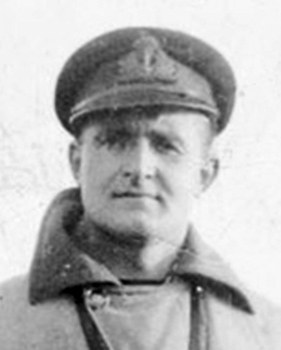 Vimiera had arrived off Boulogne during the bombing and was ordered by Cdr Condor in Whitshed
to follow him into the inner harbour where despite difficulties of
taking on troops at extreme low water she took aboard 550 troops and
left with Whitshed after 50 minutes alongside.
Vimiera had arrived off Boulogne during the bombing and was ordered by Cdr Condor in Whitshed
to follow him into the inner harbour where despite difficulties of
taking on troops at extreme low water she took aboard 550 troops and
left with Whitshed after 50 minutes alongside. 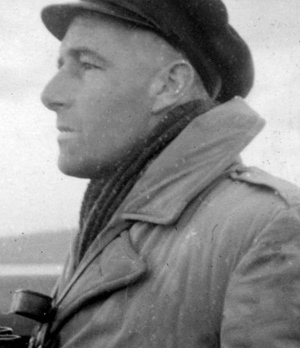 HMS Venomous was the only
member of the 16DF taking part in the evacuation. She had taken the
KFRE demolition party to Calais that morning and within half an hour of
her return had been been ordered to Boulogne. She arrived at
1735 in time to experience the worst of the bombing.
HMS Venomous was the only
member of the 16DF taking part in the evacuation. She had taken the
KFRE demolition party to Calais that morning and within half an hour of
her return had been been ordered to Boulogne. She arrived at
1735 in time to experience the worst of the bombing.